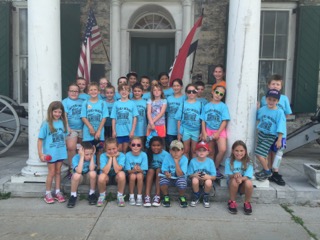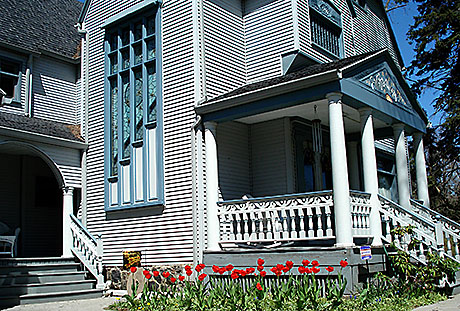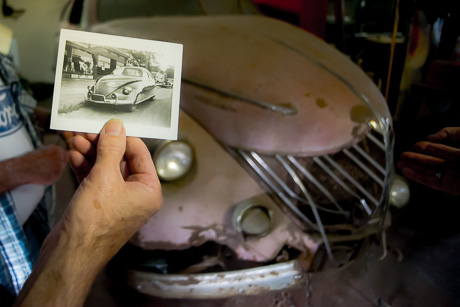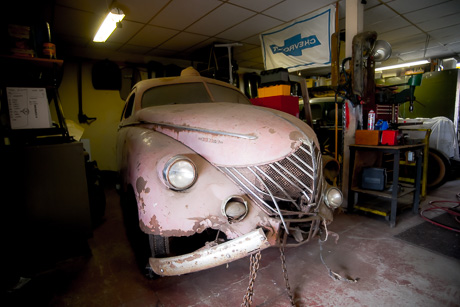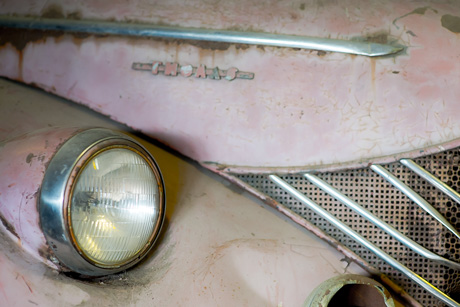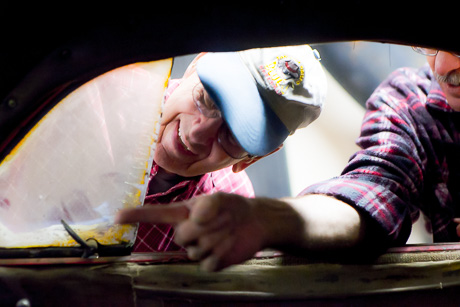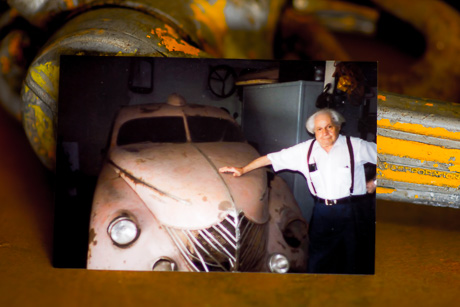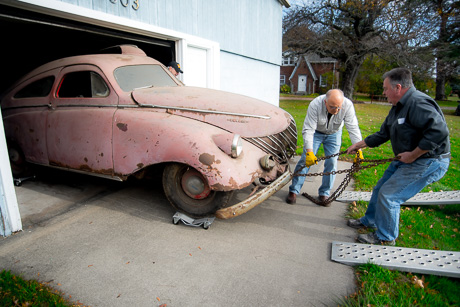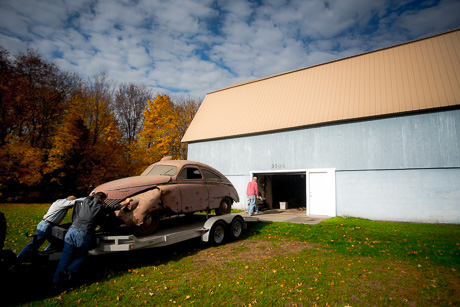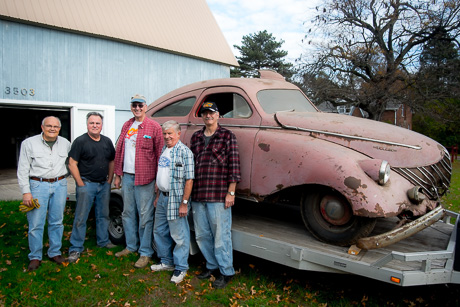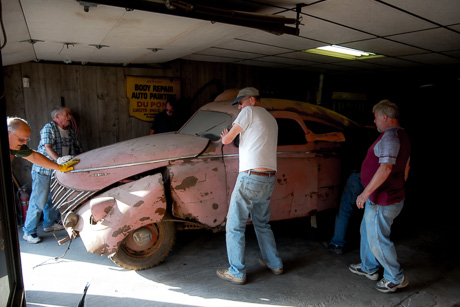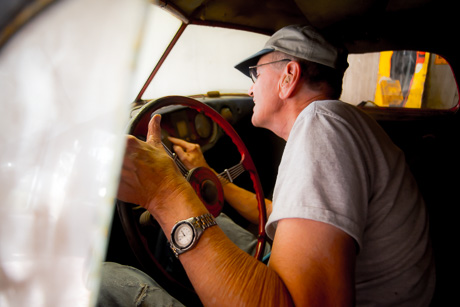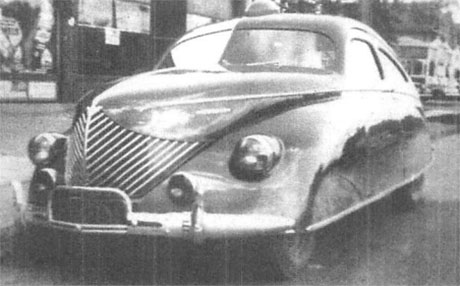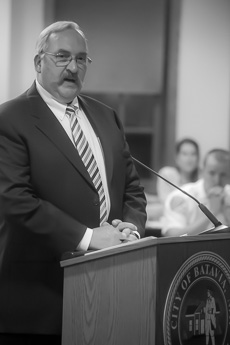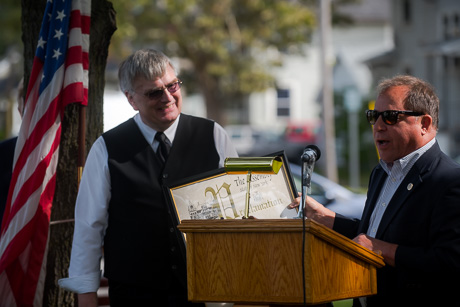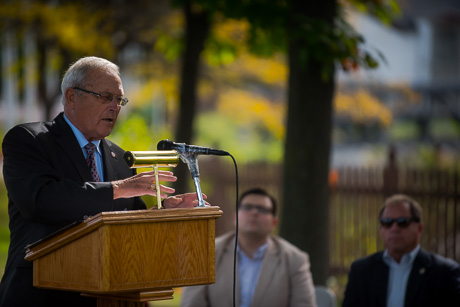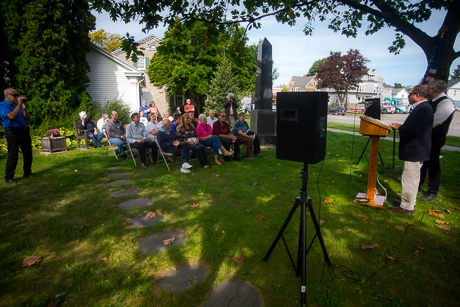Today is the day Emory Upton of Genesee County made history 152 years ago
May 10th, 1864, Spotsylvania Court House: The Day A Man From Genesee County Made History
by Don Burkel (president, Holland Land Office Museum)
“I will carry those works” were the words spoken on May 10th, 1864 by a 24-year-old West Point graduate from West Batavia. He was about to become the third youngest Union Brigadier General during the War of the Rebellion.
Colonel Emory Upton, whose Second Brigade in the First Division, Sixth Corps, Army of the Potomac, demonstrated great tactical skill at the Battle of Rappahannock Station in November, 1863, was selected to lead twelve hand picked regiments of the Sixth Corps to break the lines of Confederate General Doles’ Georgia brigade, known as Doles’ Salient.
It had been decided that a column formation, made up of four rows of three regiments, 4,500 troops, rather than the old linear form, would have greater success in penetrating Doles lines. At 6:10 p.m., young Upton leading on horseback, advanced his troops double quick over 150 yards of open field, and without firing a shot advanced over the Rebel rifle pits.
His veteran troops held the enemy’s works for little over one hour awaiting support from General Mott’s division, which never came. As dusk approached, and without any reserves, Confederate General Ewell’s corps repulsed Upton’s forces. Without support Emory had no choice but to order the withdrawal of his regiments. His casualties amounted to 1,000 dead and wounded. The young Colonel, was slightly wounded, and deeply upset about the lack of support did capture several colors, a battery and 1,200 prisoners.
Captain Kidder, whose 121st New York Volunteers (Upton’s Regulars) participated in the attack said, “the men from the Green Mountain State think that there never was such a splendid man and officer as Colonel Upton.” Grant was also impressed by this young officer’s success, and ordered General Hancock’s Second Corps, of 20,000, to follow up with the same strategy on May 12th to assault the apex of the Mule Shoe, known as the Bloody Angle.
There was no relief for Upton as his Second Brigade regiments were called upon to assist Hancocks’ troops by advancing to fill a gap in the heavy fighting at the Bloody Angle. Due to Emory’s bravery and tactical skill, General Grant recommended that Upton receive his promotion to Brigadier General because of his meritorious and gallant service at Spotsylvania Courthouse.
The dedicated and ambitious Emory Upton was promoted to Major General of Volunteers after commanding a cavalry division in 1865. He earned a reputation for his leadership and tactical skills at the battles of Rappahannock Station, Wilderness, Spotsylvania, Cold Harbor, Winchester, Selma and Columbus.
General Upton’s well-known book of tactics, military policy and ideas of reform would eventually change the structure and the efficiency of the army. We should honor this noble soldier from West Batavia for having changed the course of warfare. His place in history is duly noted in fields of Spotsylvania, Va., on May 10th.
Be sure to visit the Holland Land Office Museum and view the Upton collection.

